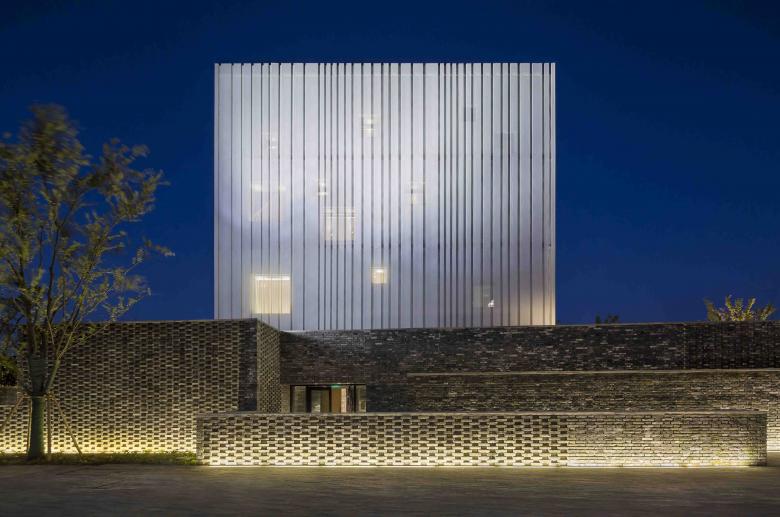Chapel by the Lake
Eduard Kögel
1. 六月 2017
Photo: Pedro Pegenaute
It is difficult to say how many practicing Christians there are in China today. Officially, they make up about two and a half per cent of the total population, but it is most probable that many are not registered as practicing Christians. The developing Chinese economy has also given churches the opportunity to build new places of worship, and in recent years they have increasingly asked architects for innovative designs. As happens elsewhere around the world, architects use the brief and programme to spatially express the philosophical and religious content in the building.
Project Name: Suzhou Chapel
Site Address: 199 Yangchenghuan Road, Yangcheng Lake, Suzhou
Architect & Interior Designer: Neri&Hu Design and Research Office
Design Period: September 2011 – September 2016
Gross Area: 700 sqm
Program: Chapel and Event Space
Interiors: Decorative Lighting: Custom Pendants by Neri&Hu
Interiors: Furniture: Custom Chairs and Benches by Neri&Hu
Design Team: Lyndon Neri & Rossana Hu (Founding Partners, Principal in Charge), Nellie Yang (Senior Associate), Jerry Guo (Senior Architectural Designer & Project Manager), Begona Sebastian (Senior Architectural Designer), Shirley Hsu, Dana Wu, Maia Peck, Brian Lo (senior associate, product design), Simin Qiu
Photo: Pedro Pegenaute
Shanghai-based architects Neri & Hu designed the new chapel presented here for a village near Suzhou City. The site is close to the waterfront at Yangcheng Lake area. The white volume of the chapel stands out from the surrounding context and seems to float above the ground. The grey brick walls of the plinth wall are also used for the ramps, stairs and the courtyards around the chapel.
Photo: Pedro Pegenaute
A footpath leads in a zigzag path to the entrance. This choreographed approach to the building is intended to prepare worshipers for their visit to the chapel. Aided by the varying height of the brick wall along its length, the footpath slowly leads them into the contemplative world of the church interior. The unusual use of brick to create a textured open latticework structure that plays with light and shadow, gives these walls the appearance of a woven 'brick carpet'.
Photo: Pedro Pegenaute
The white cubic volume of the chapel space seems to float above the grey brick walls. It composes a simple double height space with a negatively inclined roof, clad by two layers of façade: an outer perforated metal cladding that gives the appearance as a solid box during the day, and an inner skin punctuated on all sides by differently sized windows. During the day the interior is lit via these openings that filter in natural light, whereas at night the windows emit a soft glow from the interior, turning the box into a strong landmark for the wider neighbourhood.
Photo: Pedro Pegenaute
The inner church room is twelve meters high and characterized by its materiality: the ground floor walls are made of the same grey brickwork as the approach walls, while 'transparent' wooden panelling which leaves the exterior enclosing metal cover visible, gives the upper space an independent character. Some of the windows frame views to the surrounding manmade and natural landscapes.
Photo: Pedro Pegenaute
Additional guests can be accommodated on a mezzanine level gallery around the central space. The minimal quality and materiality of the space are emphasised by a grid of simple light bulbs with some small bronze details hanging deep into the space from the ceiling. A separate staircase running alongside the main space leads to the rooftop, where views are offered across the nearby scenic natural environment. This roof platform can be interpreted as the counterpart to the absent church steeple, which would signal the Christian message all too clearly in a country where Christians still have to careful consider how they appear publically.
Photo: Pedro Pegenaute
For many years, Christian communities in China built churches and chapels that were inferior copies of western examples. The last few years have however seen more and more communities turn to architects to create unique buildings that also reflect the community’s own social and cultural values. In this case, the refined spatial concept, the reduced materiality and the subtle lighting concept combined together give the building a distinctive expression, which succeeds in reflecting the spiritual character of the brief without needing to resort to the symbolic repertoire of Christian church vocabulary.










